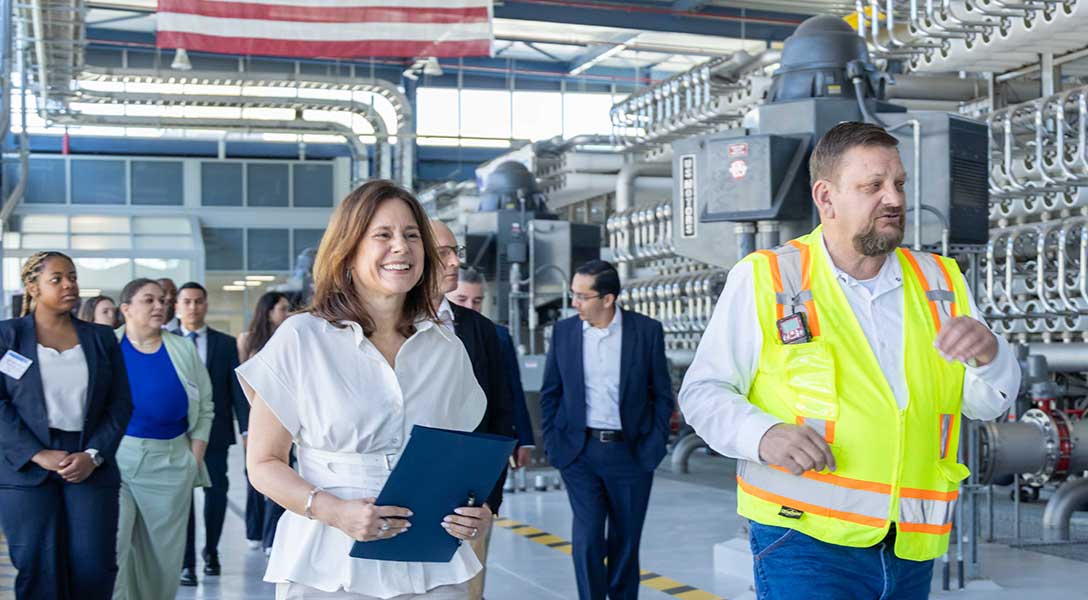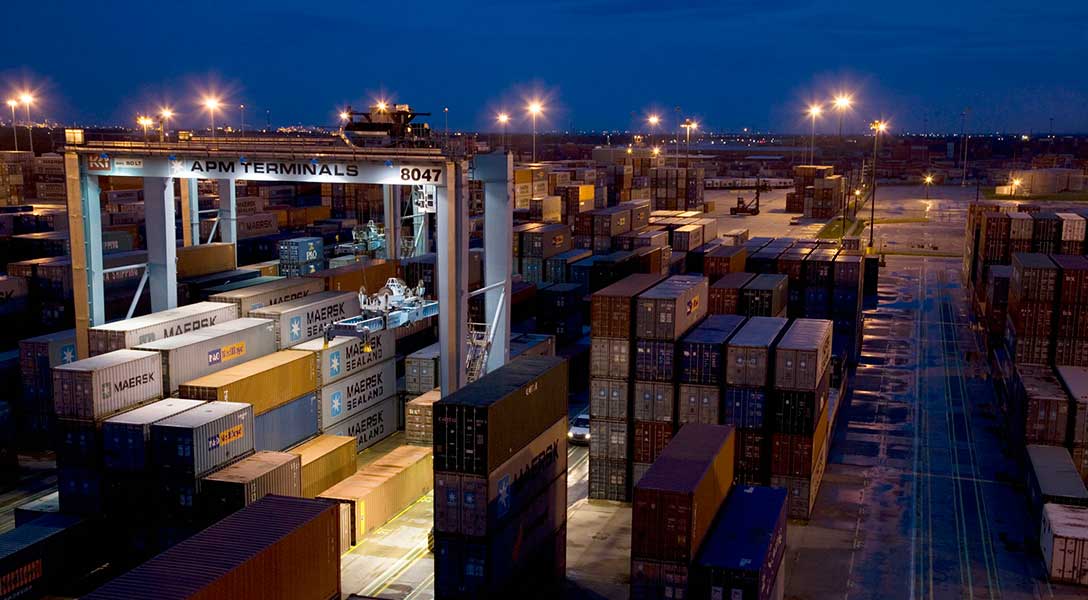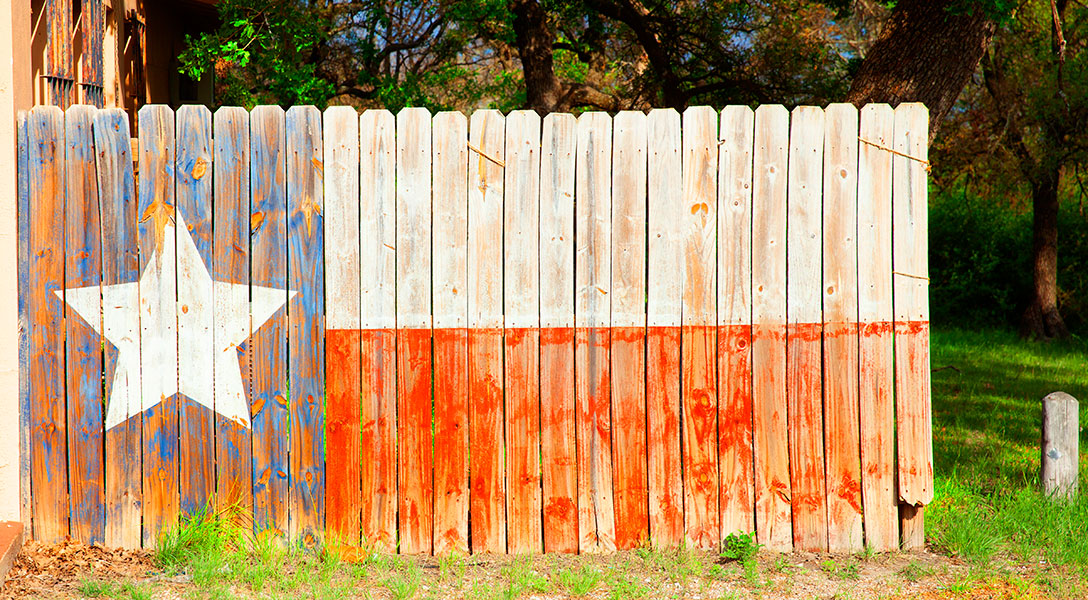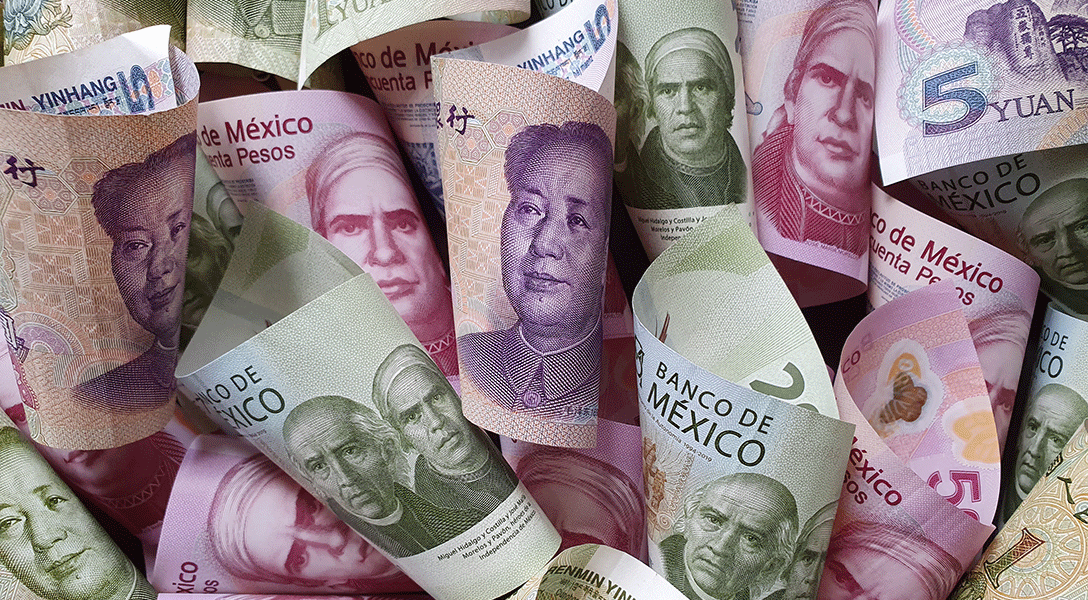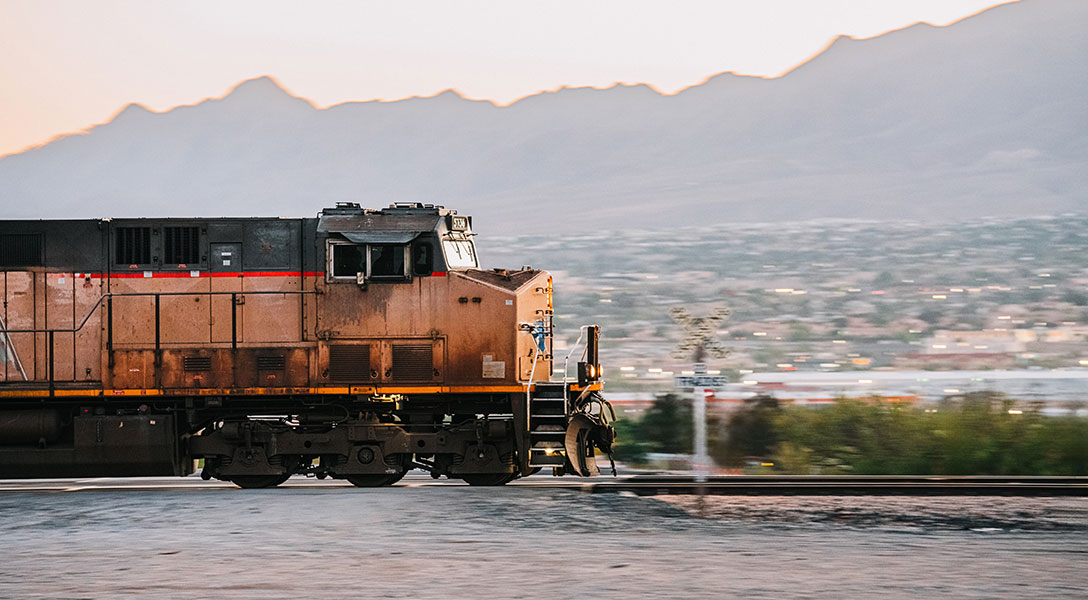
Santa Teresa port of entry navigates future during fraught time
Q. Santa Teresa is 25 miles northwest of the larger ports in El Paso. How did you make the case for Santa Teresa three decades ago?
I got out of graduate school in 1991. If you remember, we had a big recession then [July 1990–March 1991]. I was on an economic development team in the [state] international trade division. New Mexico’s governor at the time was Bruce King, who was newly elected for his third term.
We also had Sen. Pete Domenici. And there was talk of the North American Free Trade Agreement floating around. [NAFTA took effect in 1994.] And so, our governor and senator said, “How come New Mexico doesn't get any piece of the action?” I've been tracking exports from New Mexico since then. At that time, the states of Delaware, Vermont and Iowa all did more trade with Mexico than New Mexico. And we're a border state.
The governor and the senator had this fantastic vision. Let's open a port of entry to the west of El Paso. Santa Teresa is a suburb of El Paso. [We said,] “Let's build it, and they will come.”
Q. Did trade start flowing through Santa Teresa?
No.
There was a perception that Santa Teresa was too far from the center of El Paso. The road to get to Santa Teresa from Mexico, for a 12-mile stretch, was not paved for almost five years.
We were barely getting any commercial traffic, and we were doing silly things in the early days, like we'd get a bunch of Burger King coupons, stop the truckers coming through the ports of entry and say, “Get a free hamburger. Tell all your friends, everybody who crosses here gets a free Whopper burger.”
And that didn't work.
Finally, years later, we started building up a critical mass. We got a couple of anchor tenants. Foxconn [a Taiwanese electronics manufacturer], right on the other side of the border, generated a lot of truck traffic [with its arrival in 2009] through the port. Then we got the Union Pacific's big intermodal project here in Santa Teresa [in April 2014].
We parlayed off those two projects to attract a lot more industry.
[Foxconn] moved some EV [electric vehicle-related] production from China to San Jeronimo, which is right across the border from Santa Teresa. They just had a 1.2-million-square-foot expansion, so they now have 2.7 million square feet of production space. We've got close to 900,000 square feet on the Santa Teresa side tied to that production.
In the early days we had a development company, and we built our own spec buildings. In those days we'd get a 16,000-square-foot tenant—boy, that was a win. We kept going.
One particular challenge was 9/11, because after 9/11 almost everything dried up. We went through the mid–2000s as our investors cashed out. My job in the old development company was to recruit businesses and fill up space.
At that point, the state of New Mexico took on all the promotional and industrial recruitment functions out of the economic development department and formed a quasi-governmental agency called the New Mexico Partnership. The partnership asked me to continue recruiting businesses, and I've done that ever since.
Q. It's an interesting time for international trade. What changes have you seen in recent months?
We have a lot at stake in Santa Teresa. Last year, 2024, was the absolute best year we've ever had. The Santa Teresa industrial base now accounts for about 69 percent of New Mexico's total exports to the world. Our exports to the world went up 141 percent last year, and with Mexico, our exports went up 101 percent.
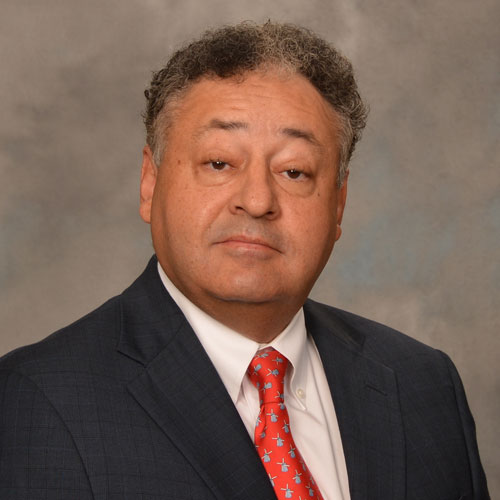
What keeps me up awake at night and we've had to struggle through are tariffs one day, no tariffs the next day. It's hard to strategically plan if you're a production plant or even a distribution center. We've seen companies put the brakes on their hiring because they don't want to be top heavy with their employee base. We've seen some scramble to find alternative sources to plug into the supply chain.
Q. What kind of impact has rapidly changing trade policy had on companies’ willingness to make investments in the region?
I've lost three deals so far in the past two months [as of mid-May]. One company that I had worked with for almost a year, in the automotive industry, completely scrapped its plans because it said it could not invest in this uncertain economic environment. I had three companies from Asia that were going to co-locate in a facility and decided to scrap their plans because if they'd come to the United States to get out from under the tariffs, they would still be importing steel and aluminum, which have a 25 percent tariff.
It's almost like a Catch-22. We want these businesses to come to the United States and set up operations, but then we surround them with a tariff wall on many of the things in the supply chain that they build around the world that would entail a tariff cost.
Q. Where have your tenants and investors historically come from?
We have about 80 companies in our four industrial parks. Only two are native New Mexican. The remaining 78 are either from out of state or they're from other countries—Turkey, Japan, China, Taiwan, Spain, Switzerland, Canada. They’re not from one region. In the last four years we recruited three Taiwanese companies and one Chinese company that have come here.
We have almost anything you can imagine in the industrial base. We have an automotive component plant. A lot of people in my home state, my beloved New Mexico, don't even know that we have an automotive production base here. But we do in Santa Teresa.
We're big in electronics because of Foxconn. We also have Commscope, which does telecommunications equipment. We have metal fabrication companies and metal stampers. We have plastic injection. We're starting to see more value-added agriculture. We have a company from New Orleans making what's called chili mash. If you like hot sauce, the basis of your hot sauce is chili squeezings and seasonings. That company has got 120, 40-foot-high silos of chili mash.
We've got an onion processor. We've fresh produce importers, third-party logistics and public warehousing.
Incidentally, during the worst of the tariff/no tariff situation in the past few weeks, public warehousing has been one of the most successful sectors to operate because everybody's been preemptively bringing in product before they get hit with tariffs. They're storing them [inventories] in public warehouses.
We have the Union Pacific intermodal yard and diesel refueling station. We get about 55 to 60 trains a day through the Santa Teresa region. Then, of course, our lifeblood: We wouldn't be here if it wasn't for the Santa Teresa port of entry, which is the sixth-largest port of entry in terms of trade on the entire U.S.–Mexico border.
Q. Have infrastructure, services and worker training kept up with the growth at the Santa Teresa port of entry?
Our big challenge is infrastructure, particularly our water wastewater system. We're constantly working with the [New Mexico] Legislature, the executive branch up in Santa Fe and federal agencies to keep modernizing our water wastewater system.
In terms of the workforce, I think everybody's scrambling. Every time we recruit a new business, our existing businesses in the industrial park tend to call me and say, “Hey, how much are they paying at entry level?” They don't want to lose their employees to another company paying 50 cents or $1 an hour or more. We're starting to see more automated processes in production. On the good side, it makes them [companies] productive, and the labor issue becomes less pronounced.
Q. Growing the port of entry hasn’t been easy. What bumps in the road did you experience getting here?
I'll tell you a silly story. Back in 1993, I think the Mexican side was [initially] a little irritated with us, that we kind of strong-armed them to put their infrastructure in. The Mexicans built their port facilities on a permanent basis—bricks and mortar.
We got caught flat footed in New Mexico. We had to put in two prefab buildings that we brought from the state prison. They were essentially trailers. And get this, they were conjugal visit trailers. We had that as our port of entry for five years.
We finally built the permanent port in 1998. And then I thought, “OK, we built it. They will come.” It's not that simple. You've got to convince customs agents and logistics companies to change their mentality, to go through a new port of entry. We have the fastest port of entry in terms of crossing for commercial trucks.
But that wasn't enough until people started coming through during emergencies or when the ports in El Paso were closed. Finally, we are realizing the dream of Santa Teresa as being a major economic engine.
We contribute about $2 billion a year to the New Mexico economy out of the Santa Teresa industrial base, according to New Mexico State University's economic impact study. To put that in perspective, film in New Mexico—we have Netflix; New Mexico is big on film—does about $800 million a year. Our Spaceport America [in Las Cruces], where Sir Richard Branson launches his rockets, has been open about 15 years, and they've done about $1 billion in business during those 15 years.
We're finally achieving what I dreamt of 30 years ago: that we could be a major economic pillar of the New Mexico economy. It's come true.
This is an edited and abridged version of a conversation available on the Southwest Economy Podcast.
